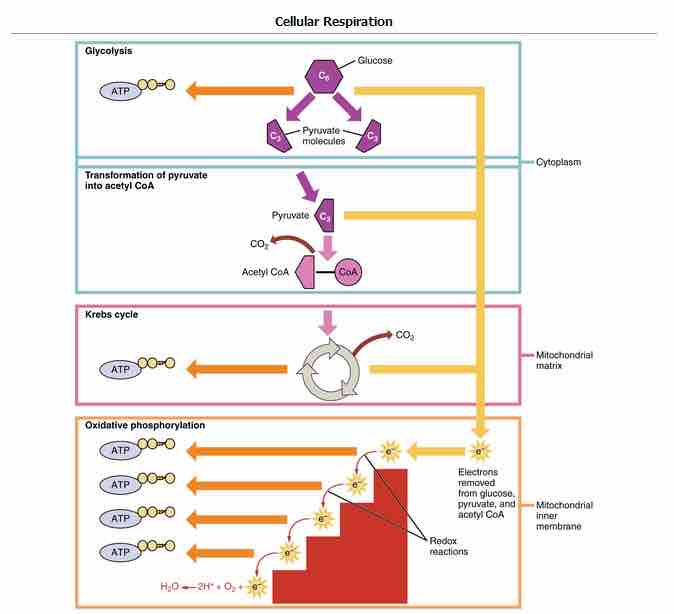Nearly all of the energy used by living cells comes to them from the energy in the bonds of the sugar glucose. Glucose enters heterotrophic cells in two ways. One method is through secondary active transport in which the transport takes place against the glucose concentration gradient. The other mechanism uses a group of integral proteins called GLUT proteins, also known as glucose transporter proteins. These transporters assist in the facilitated diffusion of glucose. Glycolysis is the first pathway used in the breakdown of glucose to extract energy. It takes place in the cytoplasm of both prokaryotic and eukaryotic cells. It was probably one of the earliest metabolic pathways to evolve since it is used by nearly all of the organisms on earth. The process does not use oxygen and is, therefore, anaerobic.
Glycolysis is the first of the main metabolic pathways of cellular respiration to produce energy in the form of ATP . Through two distinct phases, the six-carbon ring of glucose is cleaved into two three-carbon sugars of pyruvate through a series of enzymatic reactions. The first phase of glycolysis requires energy, while the second phase completes the conversion to pyruvate and produces ATP and NADH for the cell to use for energy. Overall, the process of glycolysis produces a net gain of two pyruvate molecules, two ATP molecules, and two NADH molecules for the cell to use for energy. Following the conversion of glucose to pyruvate, the glycolytic pathway is linked to the Krebs Cycle, where further ATP will be produced for the cell's energy needs.

Cellular Respiration
Glycolysis is the first pathway of cellular respiration that oxidizes glucose molecules. It is followed by the Krebs cycle and oxidative phosphorylation to produce ATP.